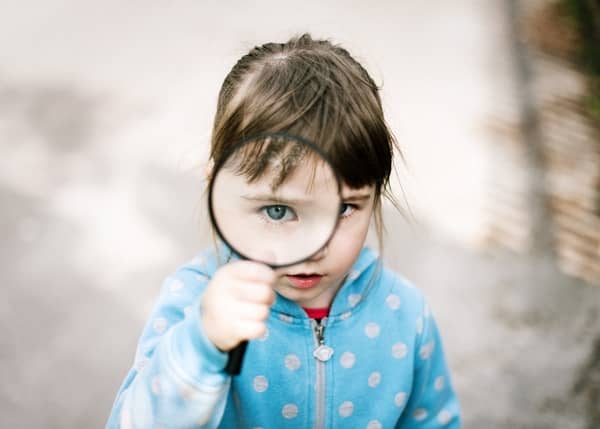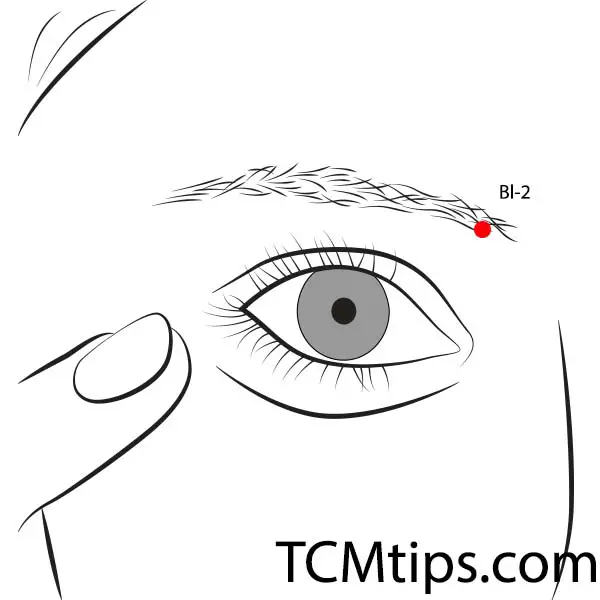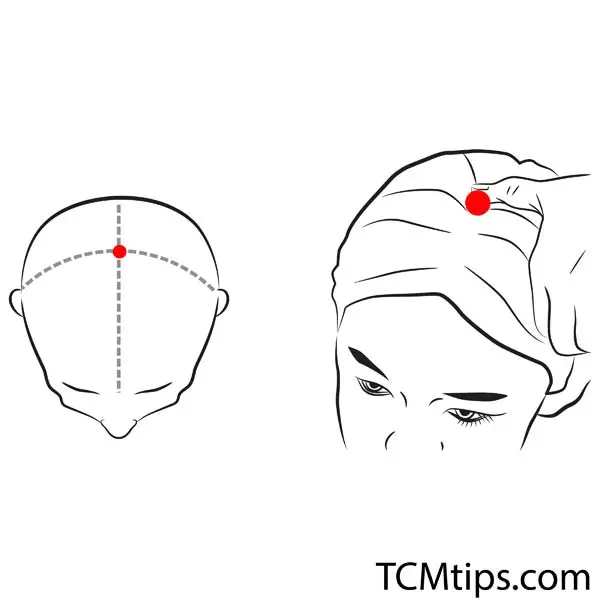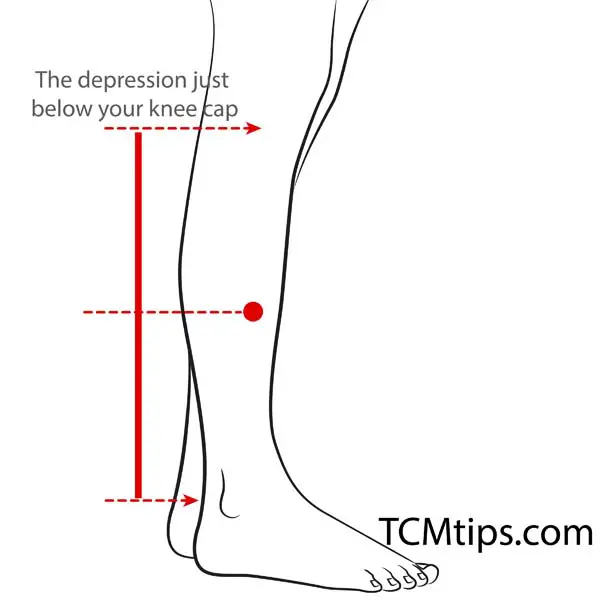Eye infection never looked pretty on anyone, and bad enough, it doesn’t give you any notice before it invades your eyes. You don’t want to waste any time trying to see if an eye infection will go away on its own, as the symptoms can get worse and become more uncomfortable. The best thing to do is locate the acupressure points for eye infections that I’ll be sharing in this article and massage them.
Eye infections are usually caused by bacteria, fungi, or viruses. As much as you may try to avoid contacting eye infections, you mostly can’t help it as the eye is always open in all kinds of weather and environment. You know you’ve got an eye infection either when your eyes feel painful, itchy, get swollen and red, start tearing up uncontrollably, feel like something is in it, or develop lumps.
The good news about eye infections, though, is that they would hardly take you to the surgery bed even though they can affect any part of your eyes. Most of them can be treated by sterilized eye drops prescribed by a doctor or physician. But all of them can be treated right from the comfort of your home through acupuncture for eye infections.
So, in this article, I’ll show you the right pressure points to stimulate when you have any of these three popular eye infections – Conjunctivitis, Keratitis, and Stye.
How To Treat An Eye Infection With Acupuncture

Before you learn how to treat eye infection with acupuncture, it is first important to understand that acupuncture can effectively treat eye infection as well as how it does it. Over the years, acupuncture treatment has been used in Chinese medicine to treat eye infections. These acupuncturists believe that when you have an eye infection, it causes an imbalance in the body that acupuncture can help balance.
Acupuncture works to relieve the symptoms of eye infections by improving Qi and blood circulation around the eyes. Now, there is scientific evidence showing that acupuncture can serve as an effective treatment for eye infections. One such clinical observation found that acupuncture is useful for treating acute hordeolum. This is a condition of inflammation on the eyelid margin that produces pus. It is caused by the obstruction of the orifices of the sebaceous glands of the eyelids.
The conclusion of this clinical observation was that acupuncture could provide short-term benefits for acute hordeolum whether it is used alone or with conventional medicine. It beats conventional treatment if you choose to use any of them alone.
Could Acupuncture Cause Eye Infection?
Acupressure cannot cause an eye infection, especially when they are applied by an acupressure practitioner. When you want to apply acupressure for eye infections, ensure to wash your hands first. Instead of acupressure causing eye infection, it serves as an effective treatment for many eye infections like conjunctivitis, stye, and keratitis.
In addition to these, acupuncture treatment for eye problems can go a long way to improve your vision, reduce your eyes’ sensitivity to light, reduce blurred vision, improve dry eyes, and reduce redness and swelling in the eyes.
Acupoints For Keratitis
Keratitis is an eye infection that affects the cornea – the clear tissue that covers your pupil and the colored part of your eyes. This condition is painful and makes the cornea inflamed. You know you have keratitis when your eyes become painful and red. You may also feel like something is in your eyes that won’t go away, and lights may hurt your eyes.
When this becomes the case, here are the acupressure points you need to massage:
Acupoint: Bl-2 (Other Names: Urinary Bladder-2/Zan Zhu/Gathered Bamboo)

Acupoint Bl-2 is one of the acupressure points for eye infections that you must know about, especially when you have keratitis. This pressure point is called Cuanzhu in Chinese, which means Bamboo Gathering. It is located at the end of both eyebrows, close to the ridge of the nose.
In Traditional Chinese Medicine (TCM), Cuanzhu provides a lot of benefits to the eyes. It clears heat from the body and expels wind. This, plus its location on the head makes it ideal for the treatment of pains around the eyebrows, blurry vision, redness of the eyes, and hiccups.
When you apply direct pressure on this acupoint, you find that the inflammation caused by keratitis becomes calm. If your case is dry eyes, here are the acupressure points for dry eyes.
Acupoint: GV-20 (Other Names: The Governing Vessel-20/Bai Hui/Hundred Convergence)

GV-20 is another of the acupressure points for eye infections related to keratitis that you must know. Called Baihui in Chinese and interpreted as Hundred Meetings, this pressure point earns its name. You’ll find it at the topmost part of your head, about six finger-width from your hairline, in the midline of your head. In Traditional Chinese Medicine, it is the point where all the Yang meridians meet.
In TCM, Baihui functions to subdue the Yang, clear the head, and calm the Shen. So, due to its location and importance, GV-20 is used clinically to treat coma, vertigo, insomnia, aphasia, and keratitis. It also serves as acupressure for brain inflammation. The role it plays in treating keratitis is stopping allergies and normalizing autoimmunity.
Acupoint For Conjunctivitis
Conjunctivitis is a pretty popular eye infection. Almost everyone contacts it at one point in their lives. This kind of eye infection affects the conjunctiva – the clear, thin tissue covering the whites of the eyes and the insides of the eyelids. This infection can either be allergic or infectious.
Whichever the case may be, here is the right acupressure point you need to massage:
Acupoint: GV-23 (Other Names: The Governing Vessel-23/Shang Xing/Upper Star)

When it comes to conjunctivitis, GV-23 is the acupoint to stimulate. If you guessed that this acupressure for eye infection is located close to GV-20, you guessed right. GV-23, or Shangxing as it is called in Chinese, is at the medial line of the head but one finger-width above the hairline, unlike GV-20.
When you locate this acupoint and apply firm pressure on it for a few minutes, you can resolve headaches, eye pain, manic psychosis, apoplexy, and conjunctivitis. The way it works for conjunctivitis is that it eases the itchiness of infection, stops inflammation, and reduces redness of the eyes.
You can also use GV-23 to relax as it serves as one of the acupuncture points for relaxation.
Acupoints For Stye
Stye is an eye infection that manifests as a painful, red swelling at the edge of your eyelid. In most cases, this swelling is filled with pus. In Eastern medicine, it is believed that the condition whereby pus forms on the external part of the body is known as sputum, and this sputum is caused by excess retention of water in the body. This is the case with external hordeolum, which requires a change in lifestyle habits to treat as well as massaging the right pressure points.
The following are the right acupressure points for eye infections related to stye.
Acupoint: ST-40 (Other Names: Stomach-40/Feng Long/Abundant Bulge)

ST-40, otherwise known as Fenglong, is the first of the acupressure points for eyes that you want to reach once you have stye. Unlike the pressure points discussed so far, ST-40 is located on the leg. You’ll find it at the center of your lower leg, in the muscle along the line connecting the outside of the knee with the outer bulge of the ankles.
In TCM, Fenglong functions as a transformer of phlegm, a stopper of cough, and a calmer of Shen. This is why in addition to stye, it is used clinically to treat cough, asthma, excessive phlegm, dizziness, and weakness of the lower extremities. ST-40 is also among the acupressure points for face pimples.
When you massage ST-40, the vital energy of the spleen is supplemented to effectively discharge the sputum that has accumulated in the body.
Acupoint: GB-34 (Other Names: Gallbladder-34/Yang Ling Quan/Yang Mound Spring)

The last of the acupressure points for eye infections I’ll be discussing today is GB-34. This pressure point is very effective in treating stye, and like ST-40, it is located on the leg. S-40 or Yanglingquan, as it is called in Chinese, is located at the outer part of the knee, in the depression beneath the bulge of the shin bone or head of the fibula.
Traditional Chinese medicine classifies GB-34 as the converging point of the sinews. For this reason, it functions to benefit the joints and sinews and relieve pain. This function makes this acupoint effective for the treatment of knee pain and swellings, shoulder pain, beriberi, and infantile convulsion. You can also use GB-34 as one of the acupressure points for gallbladder inflammation.
When you properly massage GB-34 for the treatment of stye, you improve the energy flow in the liver that has remained stagnant in the head.

Try our Anti-Aging Gua Sha Tool designed to bring out your skin’s natural glow.
Best Gua Sha Product- Anti-Aging: The tool is designed to target 11 specific aging signs such as wrinkles and sagging skin. By following the 7-step routine, users can improve skin firmness and reduce fine lines naturally.
- Enhances Skincare Routine: It works effectively with serums and lotions, boosting absorption and efficacy of skincare products.
- Visible Skin Improvement: Users can expect a smoother complexion, reduced puffiness, and a more youthful appearance.
 P. Sze
P. Sze 

















